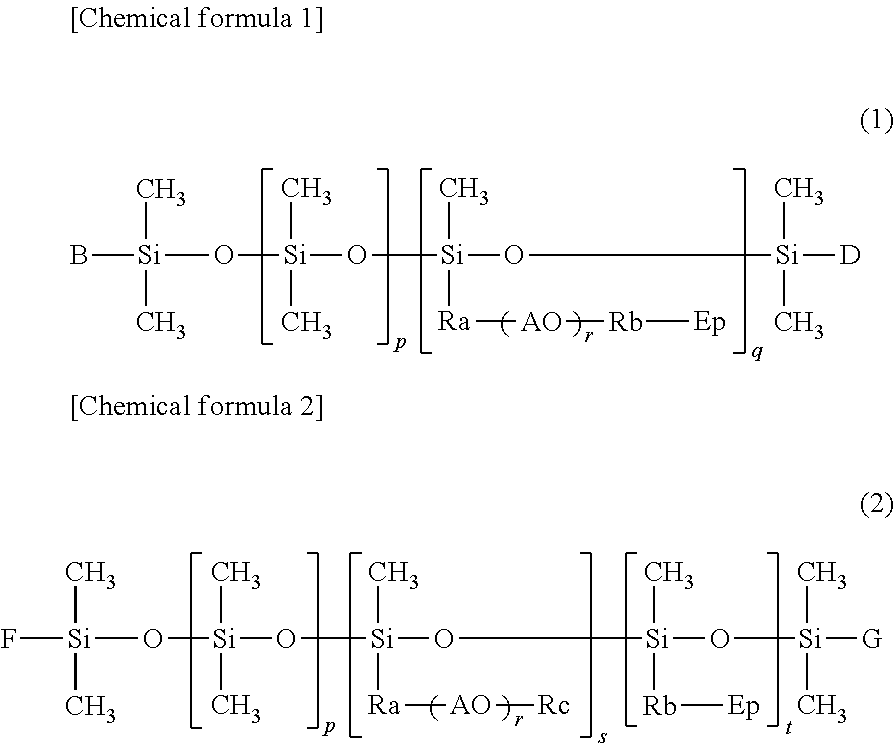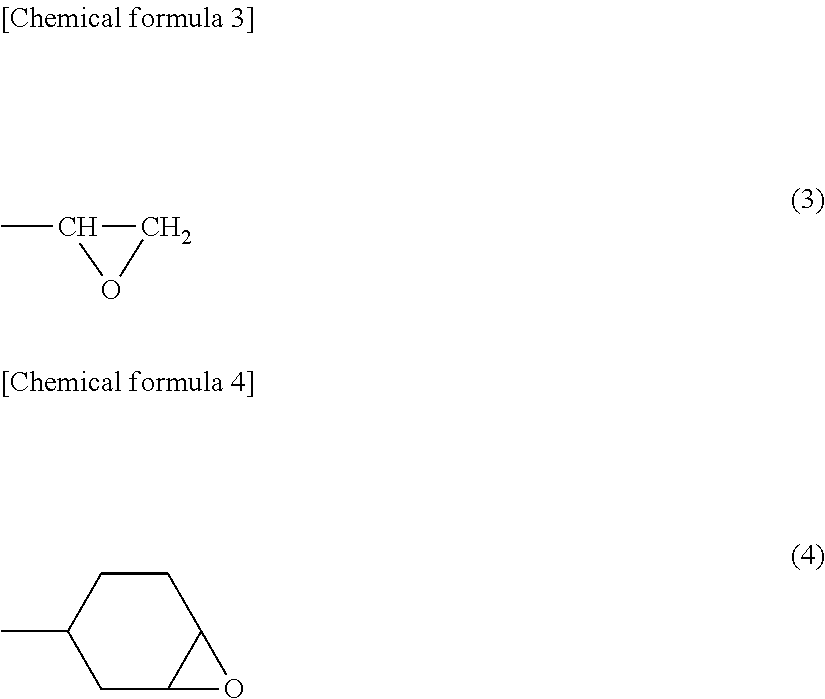Acrylic-fiber finish, acrylic fiber for carbon-fiber production, and carbon-fiber production method
a technology of acrylic fiber and carbon fiber, which is applied in the direction of textiles and paper, inorganic chemistry, solid-state devices, etc., can solve the problems of silicone finishes, insufficient tenacity reduced quality and grade of resultant carbon fiber, etc., to achieve minimal fiber separation, improve the tenacity of carbon fiber, and minimal breakage
- Summary
- Abstract
- Description
- Claims
- Application Information
AI Technical Summary
Benefits of technology
Problems solved by technology
Method used
Image
Examples
example 1
[0156]The silicone composition S-E1 was emulsified with the surfactant N-1 to be made into aqueous precursor finish emulsion containing S-E1 and N-1 in the ratio of 90:10 as the non-volatile components. The concentration of the non-volatile components was 3.0 wt % of the emulsion. The finish emulsion was applied to an acrylic fiber, which is the raw material for carbon fiber precursor and consists of the copolymer of 97 mol % of acrylonitrile and 3 mol % of itaconic acid, to 1.0% of fiber weight. The acrylic fiber was then processed into carbon fiber precursor (of 24,000 filament count with monofilament fineness of 0.8 dtex) at steam drawing step with 2.1 draw ratio. The resultant precursor was oxidized in an oxidation furnace at 250 deg.C. for 60 minutes and subsequently baked in nitrogen atmosphere to be converted into carbon fiber in a carbonization furnace where the heating temperature was elevated from 300 to 1400 deg.C. The properties of the resultant carbon fiber are shown in...
examples 2 to 35
, Comparative Examples 1 to 8
[0157]Finish-applied precursors and carbon fibers were produced in the same manner as described in Example 1 except that finish emulsions were prepared to contain non-volatile components shown in Tables 1 to 5. The properties of the finish-applied precursors and the resultant carbon fibers are shown in Tables 1 to 5.
[0158]
TABLE 1Example123456789Silicone S-E19085———————Silicone S-E2——85——————Silicone S-E3———85—————Silicone S-E4————85————Silicone S-E5—————8585—68Silicone S-E6———————85—Silicone S-1—————————Silicone S-2————————17Surfactant N-1101515151515——15Surfactant N-2——————1515—Epoxy-polyether100:0 100:0 100:0 100:0 100:0 100:0 100:0 100:0 —silicone:aminosilicone(weight ratio)Silicones:surfactants90:1085:1585:1585:1585:1585:1585:1585:1585:15(weight ratio)Amount of finish on fiber 1.2 1.1 1.1 1.0 0.9 0.9 1.0 1.0 1.2(%)Uniformity of dried finish⊚⊚⊚⊚⊚⊚⊚⊚⊚filmPrecursor adhesion◯◯◯◯◯◯◯◯◯preventabilityFiber production efficiency⊚⊚⊚⊚⊚⊚⊚⊚⊚Cohesion of f...
PUM
| Property | Measurement | Unit |
|---|---|---|
| mol % | aaaaa | aaaaa |
| mol % | aaaaa | aaaaa |
| wave length | aaaaa | aaaaa |
Abstract
Description
Claims
Application Information
 Login to View More
Login to View More - R&D
- Intellectual Property
- Life Sciences
- Materials
- Tech Scout
- Unparalleled Data Quality
- Higher Quality Content
- 60% Fewer Hallucinations
Browse by: Latest US Patents, China's latest patents, Technical Efficacy Thesaurus, Application Domain, Technology Topic, Popular Technical Reports.
© 2025 PatSnap. All rights reserved.Legal|Privacy policy|Modern Slavery Act Transparency Statement|Sitemap|About US| Contact US: help@patsnap.com



